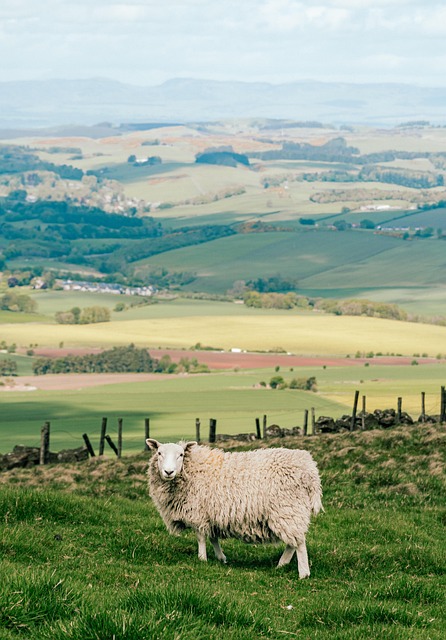New Bedford, Massachusetts residents often seek ways to enhance their outdoor spaces, and a custom fence can be a stunning addition. This comprehensive guide explores the art of designing and installing unique fences while navigating local regulations. From selecting durable materials that complement your style to creative ideas for transforming your yard, we cover everything you need to know to ensure a beautiful and long-lasting fenceline.
- Custom Fence Design: Unlocking Unique Aesthetics
- Installation Process: Step-by-Step Guide for Perfection
- Massachusetts Regulations: What You Need to Know
- Choosing Materials: Durability Meets Style
- Creative Ideas for Your Outdoor Space
- Maintaining Your Fenceline: Longevity Tips
Custom Fence Design: Unlocking Unique Aesthetics
Custom fence design offers homeowners and businesses in New Bedford, Massachusetts, an extraordinary way to transform their outdoor spaces into visually stunning and unique landscapes. By breaking away from traditional fencing options, custom designs allow for creativity and personalization that reflect individual style and preferences. From elegant and minimalist lines to intricate patterns and elaborate carvings, the possibilities are endless.
Each customized fence tells a story, whether it’s a modern aesthetic, a vintage charm, or a blend of natural elements. Skilled artisans use various materials like wood, metal, and vinyl to bring these designs to life, ensuring durability and long-lasting beauty. Customization also extends to functional aspects, such as incorporating gates, posts, and accessories that enhance both the visual appeal and practicality of the fence.
Installation Process: Step-by-Step Guide for Perfection
The installation process for a custom fence begins with meticulous planning and preparation. First, measure the perimeter of the area to be fenced, ensuring precise measurements for each section. Next, clear the site, removing any obstacles or debris that could hinder the construction. This step is crucial for a smooth and level base.
Proceed by laying out the fence panels or posts according to the design plan. Use stakes and string to guide the layout, ensuring alignment with local regulations and personal preferences. Once satisfied with the positioning, dig holes for the posts, considering the required depth and strength. Firmly place the posts in the holes, backfill with concrete for stability, and allow it to set completely before proceeding to attach the fence panels or rails, completing the installation.
Massachusetts Regulations: What You Need to Know
When designing and installing a custom fence in New Bedford, Massachusetts, it’s crucial to understand state regulations. Massachusetts has specific guidelines for fence construction, including setbacks from property lines, height restrictions, and materials permitted. Failure to comply with these regulations can result in fines or the requirement to tear down and replace the fence.
Property owners should check with local building departments before starting any fence project. Permits are often required, and inspectors will verify that the fence meets safety standards and is constructed according to approved plans. Understanding and adhering to these regulations ensures a smooth process and prevents future legal issues or costly corrections.
Choosing Materials: Durability Meets Style
When designing and installing a custom fence, one of the most important decisions is choosing the right materials. The ideal choice should strike a balance between durability to withstand harsh weather conditions and aesthetic appeal to enhance your property’s curb appeal. Wood, for instance, offers a natural, classic look but requires regular maintenance to prevent rot and decay. Vinyl fences are low-maintenance alternatives, available in various styles to suit different tastes, while steel or aluminum provide maximum strength and security without needing frequent upkeep.
Consider the climate in New Bedford, Massachusetts, where winters can be harsh and summers humid. Materials that are resistant to rust, rot, pests, and extreme temperatures will not only ensure a longer lifespan for your fence but also maintain its beauty over time. Moreover, selecting materials that align with your architectural style—whether traditional, modern, or rustic—is crucial for creating a cohesive outdoor space that reflects your personal taste.
Creative Ideas for Your Outdoor Space
When it comes to custom fence design, New Bedford residents have an opportunity to transform their outdoor spaces into unique and aesthetically pleasing areas. One creative idea is to incorporate natural elements such as curved lines inspired by local landscapes or using eco-friendly materials like bamboo or recycled metal. Fences can also become living art with the addition of climbing plants or vines that add texture and color, creating a vibrant and ever-changing backdrop.
Consider unique patterns and textures for your fence panels, such as intricate carvings or mosaic tiles, to make your outdoor space stand out. Customization allows you to blend functionality with artistic expression, ensuring your fence becomes an extension of your personal style and enhances the overall beauty of your New Bedford property.
Maintaining Your Fenceline: Longevity Tips
Regular cleaning and maintenance are key to ensuring your custom fence remains in top condition for years to come. Start by clearing away any debris, leaves, or branches that may accumulate on top of the fence. Use a soft-bristled brush to gently remove dirt and grime, avoiding harsh chemicals unless specifically recommended by the manufacturer.
Inspect your fence regularly for signs of wear and tear, such as loose posts, rusted hardware, or damaged panels. Addressing these issues promptly will prevent them from escalating and ensure the structural integrity of your fence. Regular oiling of metal components can help prevent corrosion, while applying a fresh coat of paint or sealant every few years will protect the fence’s finish and extend its lifespan.
